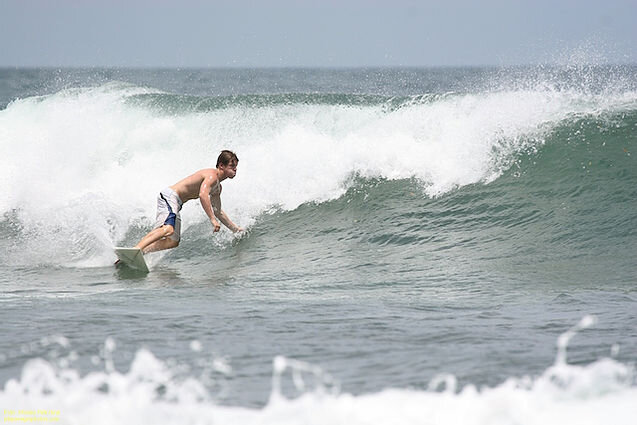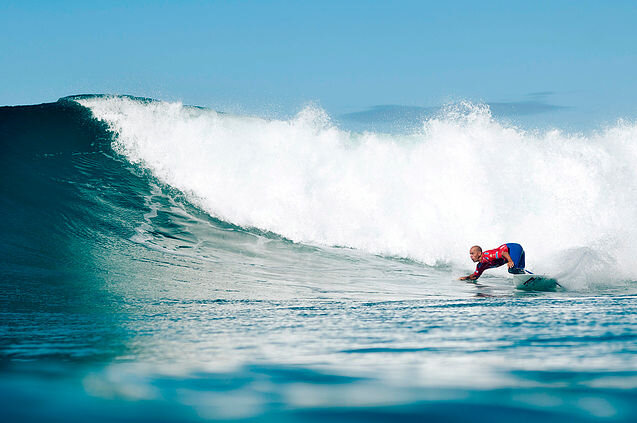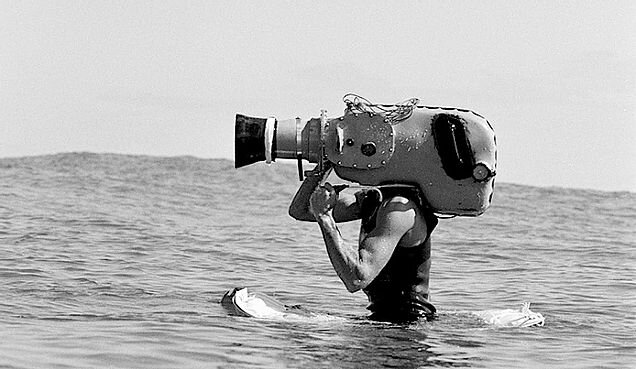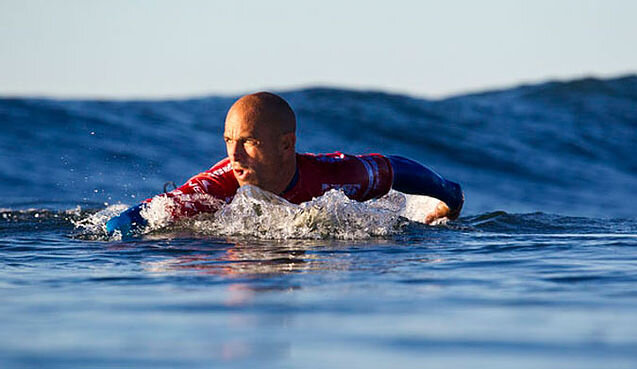Intermediate to Advanced Surfer: 9 Tips that Will Improve Your Surfing
Follow our 9 tips to take your surfing to the next level.
Making the transition from intermediate to advanced surfer is a tricky step. And it’s one that isn’t helped by an unwillingness to accept advice. As surfers, we display a reluctance to continue with lessons and are certainly sensitive towards anyone attempting to unpick what is going wrong and daring to make suggestions as to how it can be put right. Yet this hesitancy to seek advice can lead to a lifetime of bad habits. Poor technique can become ingrained, making the journey of improvement infinitely more difficult than it needs to be.
Here are 9 tips that every intermediate surfer should follow to ensure that the journey to advanced wave-rider is a realistic and obtainable goal.
Don’t Over Work A Wave
As soon as you’ve mastered turning the board the temptation is to be constantly working your feet. Incessantly wiggling on every section of the wave, not a single moment of the ride when the board is simply planing along the open face of the wave. However, less is most definitely more. Not only does overworking the board sap your speed, it doesn’t look particularly graceful. Don’t be afraid to pick a line and hold it, savouring the turns for when they are necessary.
Pick your line, hold it, and savour the turn.
Master the Bottom Turn
The bottom turn sets up the whole wave. If you have a decent bottom turn everything else will slot into place. Make this the first move you master, and don’t try anything else until your bottom turn is solid. Hold your line, keep your knees bent, and as you pivot shift most of your weight to your back leg in order to gain as much speed as possible while driving up the wave.
Practice Specific Manoeuvres
Surfing relies so much on instinct that conscious decisions need to be forced to the front of your mind. If you’re struggling with your bottom turn - then spend a week practicing nothing but bottom turns. Take off on a wave with a clear intention, and once you’re done, paddle back out to the lineup and do it again. If your cut-backs are your weakness, then make this your focus. When you’re struggling with a certain aspect of your surfing, in the brief moment of the wave, you’re going to default to the path of least resistance, subconsciously avoiding the move unless you force yourself to do it.
Fortunately cameras aren’t quite as cumbersome nowadays.
Get Someone to Film You
Forget trying to get that elusive Facebook profile picture for a few sessions and use your expensive GoPro to help improve your surfing. Ask a friend to film you from the beach and spend a while analysing your technique. You’ll be surprised - probably not pleasantly – at just how average you look. The waves will look smaller, your turns won’t be as on the rail as they felt, and you’ll probably be doing something weird with your arms that you didn’t even realise you were doing. But that’s the whole point of filming, best to iron out these quirks before they become too ingrained in your surf technique. Firstly ensure you have a decent stance upon which to base your improvement on. Are your feet in the right place? Do you bend your knees enough? Are you using your arms to help drive your surfing? You’ll be amazed at how seeing yourself surf will refocus the areas in which you need to improve.
Get to Your Feet Quickly
The temptation is to quickly eye up a wave before you pop to your feet. But those few vital seconds where you’re looking down the line and deciding how best to approach the upcoming swell are costing you crucial speed and power. Don’t hover on your locked arms, as soon as the wave takes you get to your feet and drive down the line to beat the section. And don’t drag your feet on take-off, anything other than one fluid motion costs you valuable pace.
The King of paddling hard, actually, he’s the king of every aspect of surfing.
Paddle Hard & Fast
Your initial speed and power comes from the effort that you put into paddling to catch the wave. Use powerful strokes to ensure you jump to your feet carrying as much speed as possible. And try to avoid the ungainly double-handed paddle of desperation.
Ride the Wave to the End
Attempting to ride every last second of the wave is a useful lesson in how to maintain fluidity and learning where you’re scrubbing unnecessary momentum from your ride. Attempting to perform turns in the smaller section of a wave is much more difficult and will help to improve your understanding of weight distribution and transfer.
Know Your Limitations
It’s easy to watch the likes of John John Florence and Kelly Slater making the most ridiculous of moves look easy and convincing ourselves that we’ll spend the next session mastering the 580-rodeo-back-flip. But most of us will never get close to pulling off moves similar to those being performed by the world’s best. Rather than flinging your board skywards at every opportunity in an unrealistic attempt to land an improbable air, concentrate on doing the simple things well. Smooth turns, powerful clouts off the lip and a soulful style are far classier than a frenzied combination of incomplete manoeuvres.
Have the right equipment
Finally, it’s critical to ensure you have the correct equipment. Whatever your standard of surfing, a flexible, snuggly fitting wetsuit that will keep you warm in the water is non-negotiable. Clean Lines has a simple range of suits that fit every requirement. To stay warm in the winter months, check out the Clean Lines Thermal. For the in-between season option, try the 4/3 Mid. And for the warmer waters, the Clean Lines 3/2 Light will see you surfing long into the summer evenings.
And when changing into your wetsuit, stay warm in the Clean Lines Quick-Dry changing robe. 100% waterproof, beautiful sherpa inner fleece lining, and velcro wrist cuffs designed to tailor the fit to every individual, the Clean Lines surf robe makes changing in and out of your wetsuit a pleasure.




